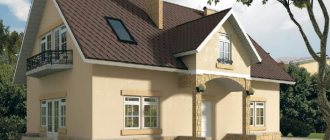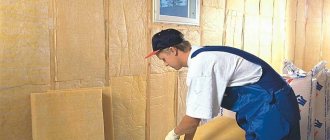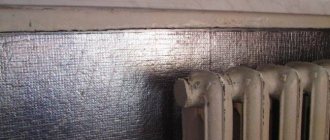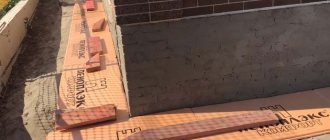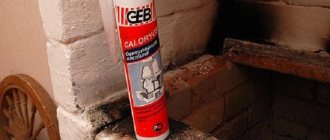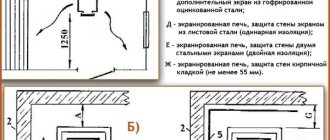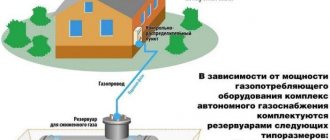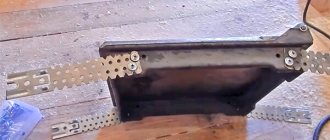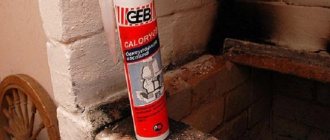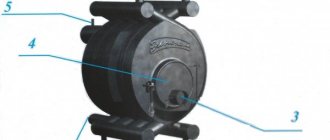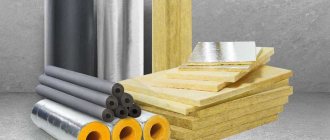What are non-combustible elements?
Fireproof panels are resistant to temperatures no lower than 1580C. Most of them are produced in the form of simple products, weighing only a few kilograms. Refractories are used in units to protect against the effects of thermal energy.
What materials are non-flammable? Such materials, when exposed to heat and fire, are not capable of ignition and do not spread fire.
Types of non-combustible wall products
Non-flammable wall panels used in the construction industry include plaster and various mortars. But, at the same time, it must be a heat-insulating material, because it is used for laying heat-resistant ceramic tiles or can be placed under fireclay slabs for furnaces.
If you plan to build a fireplace, firebox and other building elements yourself, then you can independently select the recipe for plaster and mortar for laying tiles. But, if this is your first experience, then the ready-made fireproof mixture will help you.
SKL consumables
Calcium silicate sheet material is an environmentally friendly material that contains only 5% additives. Such additives are aimed at increasing mechanical properties.
The building element consists of cement, quartz powder, and paper pulp.
Important advice. To apply SCL to the front side, it is necessary to apply a fairly generous layer of ultraviolet paint.
Such fasteners can be used to decorate premises both outside and inside. Its peculiarity is that it has great moisture resistance, which means it is perfect for finishing:
- bathrooms;
- baths;
- sauna
Low-flammability sheets are fire-resistant, which means they can be installed near hot surfaces - next to a fireplace or stove.
SML products
Magnesium glass sheet can hardly be classified as an environmentally friendly material.
But, in terms of its composition, it is also not harmful to the body, which means it can be used in the interior of residential buildings and vacation complexes. The thermal insulation is durable and resistant to high temperatures and humid environments.
Important recommendation: LSUs are recommended to be installed near an open fire or heating sources.
Since such a sheet can withstand temperatures of 1000 degrees or more. Given this fire resistance, it can be used as fireproof panels.
They can be installed in a bath complex or simply in a room with a fireplace or heat regulators.
GKLO products
Fire-resistant plasterboard sheet is a relatively young type, which was put into operation only in 2015.
Resistance to fire is ensured by the fact that special additives are introduced into the gypsum, which allow it to withstand many degrees.
At the same time, such a plasterboard sheet allows you to contain smoke during a fire.
The surface of such a sheet is painted light pink, which makes it possible to distinguish it from an ordinary non-fire-resistant sheet. It is recommended to use this sheet for heat-resistant cladding of walls and ceilings.
Types of materials
Refractory materials can be roughly divided according to the method of heat transfer:
- Heat reflective – aimed at reflecting infrared radiation into the room;
- Preventing loss due to its physical and chemical properties.
On video of fireproof materials for walls around furnaces:
But all of them can also differ in the type of raw materials from which they are produced:
- With organic components , for example, polystyrene foam materials, although their fire resistance is very low, they are best suited for walls near stoves with low heat;
- Inorganic is a broad class of non-combustible materials for insulating walls of a wide variety of fire resistance, including very flammable ones, such as wooden floors. These include stone and basalt wool, pressed into large slabs, fiberglass wool, lightweight cellular concrete slabs with fire retardant impregnations, honeycomb plastics, foamed perlite or vermiculite, and polypropylene. However, such a beautiful decorative thing as Leroy Merlin sheet plastic is definitely not suitable.
- Mixed type - these include asbestos-cement refractories, asbestos-lime or silica, foamed from a variety of inorganic substances.
Basic requirements for refractory materials
Many country buildings are built from wood, be it a cylindrical or frame house; without a stove or fireplace it is difficult to survive a frosty winter, so their arrangement is approached very carefully, and the materials placed around the stoves are chosen so that they are:
- Effectively and reliably prevented any attempted fires;
- Environmentally friendly, so that when heated they do not release harmful substances into the home air.
Information from this article will help you understand what composition of mortar for plastering a stove exists and is most often used.
But what are the dimensions of a standard oven brick can be seen here.
What is the size of a red stove brick, information from the article will help you understand: https://resforbuild.ru/kirpich/kladochnyj/razmer-standartnogo-kirpicha-krasnogo.html
You may also be interested in learning about what kind of brick is used for laying stoves.
For walls around stoves
A long time ago, people used asbestos sheets to line the walls around stoves, but it turned out to be very harmful to health and the environment - its microparticles can enter the lungs or be deposited on things, which leads to serious illnesses, and with strong heating they also release carcinogenic substances. substances. Therefore, the best materials can be considered:
Fire-resistant plasterboards. can act as the basis for covering walls around hot stoves, and for decoration, porcelain tiles of the most unusual colors can be used.
On the photo - fire-resistant plasterboards for the stove:
The sheets have the following characteristics:
- Fire resistance – up to 30 minutes of fire resistance;
- Does not ignite for up to 1 hour even after a fire has formed;
- Slab parameters – 120 x 250 x 1.25;
- On the front and back sides there is cardboard treated with gypsum, inside there are fiberglass threads that will resist fire;
- The ends of the sheets are covered with cardboard material, and there is a joining chamfer along them;
- Fastening can be done either using adhesives or self-tapping screws.
Fireproof minirite slabs. The material has excellent heat-resistant properties and is produced exclusively from environmentally friendly substances, including:
- Compositions of white or gray cement make up up to 90% of the total material;
- Included are mineral fibrous materials;
- For strength and durability, fiber reinforcing boards are used.
Asbestos fiber is completely excluded from the composition, which improves the quality of the material for a home stove. It is easy to fix it to the wall with screws close to the wall itself; for reliability, you can mount 2 sheets of minirite. Note! When installing, it is necessary to leave a small distance, since the material may increase in size when heated. For other walls, you can choose a similar decorative brick finish.
Photo-fireproof mineralite slabs
Protective stainless steel sheets are a slightly expensive but reliable fireproof material that can be used to protect not only the walls of the house, but also the basement when installing a heating boiler. But in order to provide the greatest protection, special fiberglass with thermal protective properties should be placed under the stainless steel - the structure will reliably protect the house from any attempts to start a fire. Choose the substrate carefully so that it does not contain harmful phenolic resins; when heated strongly, they release substances that are too hazardous to health.
In the photo - protective stainless steel sheets
Heat-resistant material made of basalt fiber pressed into mats - it is hygroscopic, has a high degree of resistance to fire, and can remain unchanged at temperatures up to 900 degrees Celsius.
Photo: heat-resistant basalt fiber material
Superisol sheets for wall insulation are a practical and versatile thermal insulation material, with low specific gravity and excellent strength and durability.
Photo-sheets of superisol for wall insulation
Insulation of walls with heat-resistant terracotta tiles . The main advantage is the complete environmental purity of the material; they do not contain any chemical coloring compounds, and have excellent vapor permeability and fire-resistant properties. Glazed ceramic tiles for interior wall cladding also look beautiful.
The photo shows wall insulation with heat-resistant terracotta tiles
For finishing walls under a boiler
A gas or steam boiler heats up very much to ensure heat transfer to the house at the required temperature of the carrier. Therefore, experts recommend equipping walls with porcelain tiles with a high degree of fire resistance. The characteristics are the most reliable - it can withstand high temperatures without visible signs of fire.
The photo shows porcelain stoneware slabs near the boiler
It is also possible to use sheets made of fibers impregnated with gypsum; installation is very easy by gluing them to the walls, but it is not recommended to use plastic brick panels for interior wall decoration, since they do not meet fire safety requirements.
Recently, sheets made of xylolite fiber have begun to gain popularity, since they meet all environmental properties in terms of cleanliness and the absence of any harmful emissions, even at elevated temperatures of about 1000 degrees. The material is also very flexible; these properties make it possible to sheathe the most curved wall surfaces. It can withstand humid and damp air perfectly, its main characteristics do not change.
But what solution should be used for plastering a home stove and how to choose it is described in great detail in this article.
You can find out where and how kiln red solid brick m 200 is used by reading this article.
For those who are used to doing everything with their own hands, it is worth paying attention to how to make a solution from clay for laying stoves.
But if you want to do everything quickly and without unnecessary hassle, you should turn your attention to a ready-made mortar for laying stoves. In order to make the right choice. It’s worth following the link and reading the article.
But what is the price of red stove brick and how to choose it for your construction site, you can find out from this article.
Manufacturers and prices
When the owner of a house or vacation complex has chosen an object that he likes to install a fireproof slab for the stove, the question of the company and cost remains open.
A small recommendation: special attention should be paid to companies already known at the time of acquisition.
They will be construction companies that have proven themselves with quality, abundance of products and branches in different cities.
It is worth considering that heat-resistant materials for stoves are quite expensive, so you should choose average or close to expensive prices.
You should not rely on low prices and unknown manufacturers.
It is quite possible that their company may turn out to be a “one-day” company and no one will answer you for the refractory material and its product quality and it will also be impossible to return the invested funds.
It is not reasonable to indicate uniform prices, because the price market is quite flexible and everything changes too often.
Fireproof materials and methods of their use
Asbestos sheet
Asbestos is a common fireproof material that can withstand prolonged heating up to 450-500 °C. At the same time, it almost does not lose its strength. Asbestos is a material that conducts heat poorly.
It is produced in different forms, including in the form of sheets. Widely used where furnaces are used, for thermal insulation of objects prone to fire, for the construction of fire-resistant walls and ceilings, etc.
Sheet steel
Steel is widely used in furnace production . It is used in different forms (angle, channel, wire, etc.). You can’t do without sheet steel either. Thus, elements of furnaces are made from it, sheets of metal are laid in front of the furnace doors, and it is also used for ovens. In the latter case, the steel must be clean, absolutely free from rust.
What parameters to pay attention to when choosing
When choosing thermal insulation, you need to pay attention to several points. Important criteria are the price of materials and work, as well as the installation method that will be carried out. At the same time, it is necessary to carefully analyze the characteristics of the selected option. These characteristics include:
Thermal conductivity. It is important that the piece of consumable you choose is not raw, otherwise it will not cope with the plans assigned to it.
Thermal conductivity depends on the degree of humidity, since water has the ability to transmit heat better than air. Non-flammable substances retain heat inside the product.
The porosity of the heat insulator. There are closed or open pores on the elements.
It is important to ensure that they are evenly distributed over the surface; these pores are involved in heat exchange and air circulation.
Rapid water absorption. This criterion shows how much water has accumulated and how much of it can be retained. To test water absorption, you need to place the item in a humid environment.
Density and vapor permeability. Density depends on its mass in combination with the volume of the source. The vapor permeability level shows how much steam can pass through non-combustible wall insulation in a certain period of time.
Resistant to biodegradation. If fire-resistant materials have high biological resistance, they will be able to resist insects and fungi in conditions of constant or simply high humidity.
Fire resistance and heat resistance. Emphasis on the flammability and combustibility of the material.
If the insulation can withstand flames, then the level is high.
Combustible substances are added, so during heating the level of heat reached is checked, as well as the stability of the properties during it. At high temperatures, characteristics may decrease, as well as strength, and as a result, quality.
Frost resistance. To check this parameter, insulating structures are placed in low temperatures and analyzed to see if their properties have been lost during freezing and thawing.
